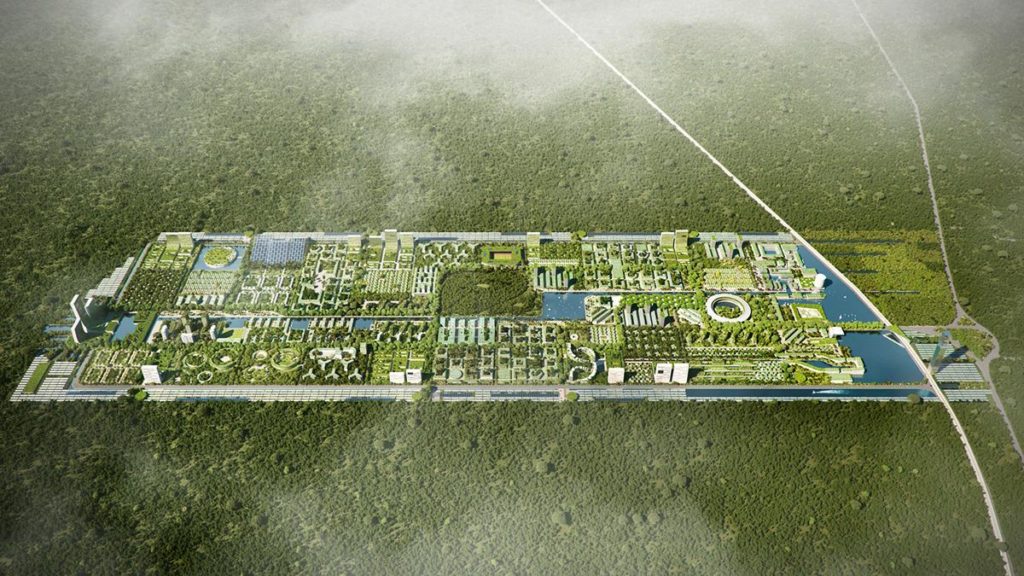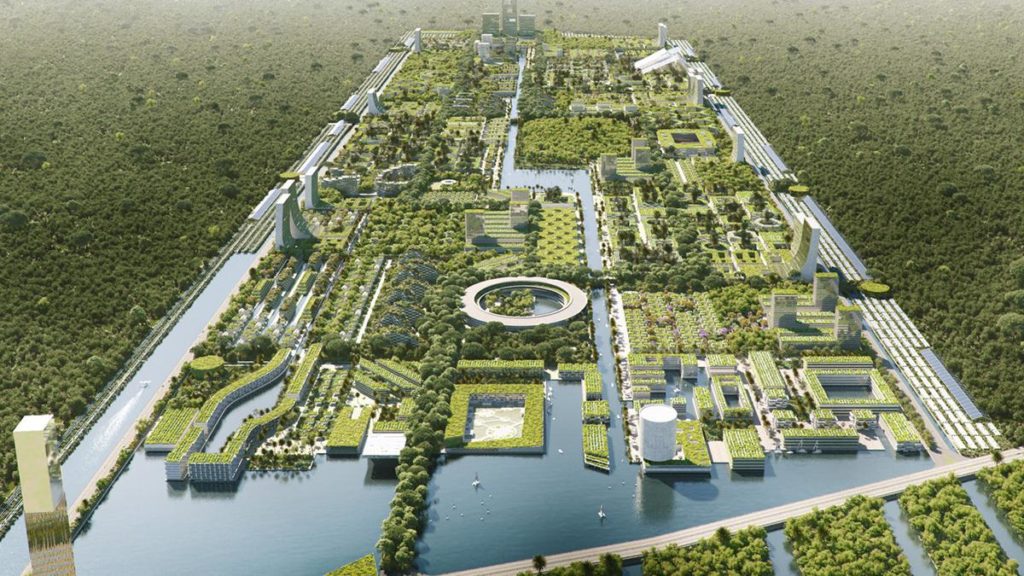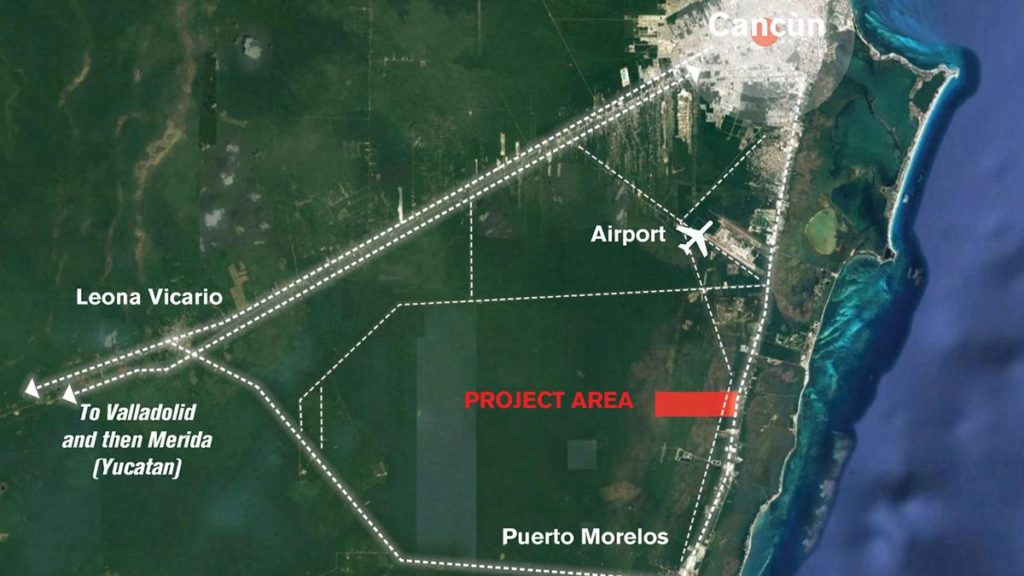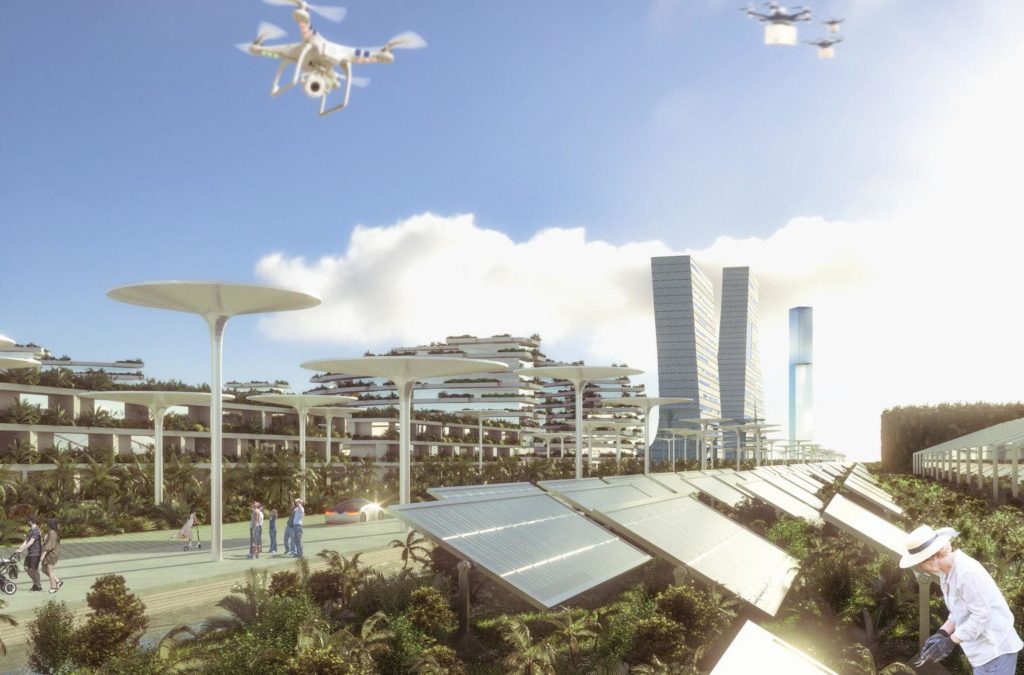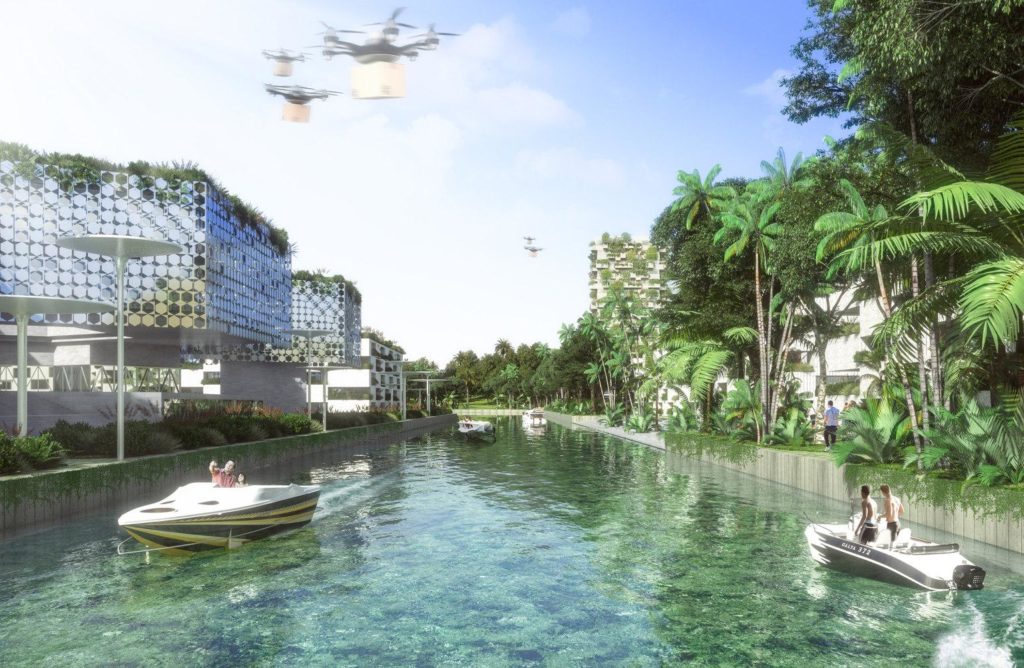The greenest city in the world
130,000 people in Mexico are soon expected to be living in perfect harmony with nature. This vision of “the greenest city in the world” is actually within grasp.
It isn’t that long ago that artist Klaus Littmann caused an international stir with his project “For Forest” and 300 trees in Wörthersee stadium. Regardless what one may think of this forest in the middle of the city of Klagenfurt, his message was received loud and clear. The interdependence of nature and human beings was strikingly highlighted as being remarkably unhealthy.
The greenest city
An exactly opposite, but all the more direct approach is now being taken by Italian architect Stefano Boeri. With his truly sophisticated concept of a green city in the forest, he has not only attracted attention, but also conceived a thoroughly realistic proposal for how we humans could potentially live in harmony with nature over the long term. In short: he has designed a city with the name “Smart Forest City Cancun” that enables a 100% sustainable urban lifestyle.
And this is the vision: a city set in the midst of a 557-hectare forest in the south of Cancun. So many trees grow here that there are 2.3 trees for each of the 130,000 inhabitants. In addition, nearly all of the building exteriors are greened. This doesn’t simply make it look very pretty, but is intended to capture a phenomenal 116,000 tonnes of carbon dioxide within the city and naturally sequester around 5,800 tonnes of CO2 a year. In this case, it means that the area used by humans and nature is in equilibrium, at least theoretically.
7.5 million trees
The figures for this project weren’t just plucked out of thin air, either. Boeri was able to recruit the renowned botanist and landscape architect Laura Gatti, who developed a planting concept involving around 7,500,000 plants. It envisages 400 different species and comprises around 260,000 trees as well as bushes and shrubs.
This is to be the first forest city of the new millennium, says the architect, emphasizing the seriousness of the project. A cosmopolitan, international city, whose development is aimed at technological innovation and environmental quality. For this reason, Boeri and his team have incorporated many other details into the design as well. The smart city’s self-sufficiency is just one example.
Totally self-sufficient city
Together with the German firm “Transsolar”, he came up with a concept that actually makes the city entirely self-sufficient as regards food and energy. This is made possible by way of a surrounding belt of solar panels and cultivated fields. The fields are irrigated by a water channel that is fed by an underground seawater pipe.
Water is key to this project. It is stored at the entrance to the city in a giant pool in which a desalination tower is installed. A system of navigable channels makes it possible to provide the entire settlement with water. This includes the agricultural field belt that surrounds the city. In addition, a series of water gardens provide necessary flood protection.
New ground may soon be broken here when it comes to mobility too. A structured transportation system known as “Mobility in Chain” (MIC) has been conceived for the city. This allows inhabitants and visitors to park their vehicles on the outskirts of the city. Instead, they rely exclusively on the internal electric and semi-automatic infrastructure. Citizens can also reach the most important hubs in the city via an ingenious network of bike and footpaths.
The international real-estate developer Grupo Karim’s has not only placed the order for the impressive scheme, but has apparently already secured the necessary financing as well.
Incidentally, the current design is not Boeris’s first concept of this kind. In 2014, he installed a “vertical forest” on the façades of two multi-storey buildings in Milan. Construction of the first “Forest City” is due to commence in the Chinese city of Liuzhou next year.
And realization of the forest city in Cancun, which is to be developed in place of a large shopping centre, is actually within grasp. The international real-estate developer Grupo Karim’s has not only placed the order for the spectacular scheme, but has apparently already secured the necessary financing too. All that’s missing is the green light from the local authorities – which Boeris has now been waiting for since March 2019…
Text: Johannes Stühlinger
Translation: Rosemary Bridger-Lippe
Photos: The Big Picture
